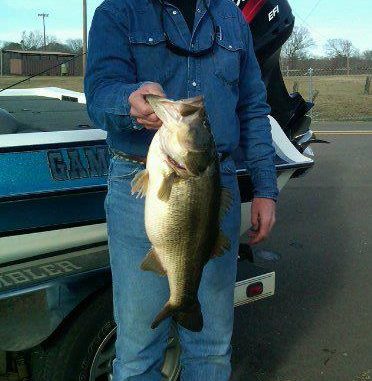
Topwater frogs still draw strikes during Bayou Bandits Bass Club tournament
Alan Bass was set June 15 to fish a Lake Bistineau bass tournament with Shreveport’s Bayou Bandits Bass Club, and was greeted with what has become a familiar sight when he pulled up to Grice’s Landing.The launched was covered with giant salvinia — but Bass was still able to get in the water.
“The launch and the surrounding water were blanketed with salvinia, but it wasn’t so bad that it was impossible to get the boat in the water,” he said.
The weather was fairly calm with not much wind blowing, and temperatures were in the 90s. The sun was blazing with no cloud cover.
Bass was using a 7-foot, 10-inch Nitro rod fitted with a Diawa baitcast reel spooled with Spider Wire 85-pound-test braid. He was pitching a black topwater frog tied to the line with a Palomar knot Bass likes to use heavier line when frog fishing.
“I always use bigger line when I fish a frog,” he explained.
The heavier line allows him to pull the frog through anything.
Bass also always likes to use a regular black color for his frogs.
“I’m a firm believer that black works just as good as any color,” he explained. “All the fish really see is the silhouette and the shape of the bait.”
Pitching the frog around cypress trees turned out to be the best technique for him to get fish in the boat. He used a medium retrieve, and focused on cypress trees in about 7 to 8 feet of water. The bass were using the trees for cover, and coming up under the frog.
While the water was fairly clear, the giant salvinia was giving him some problems.
“The water looked good where you could actually see it,” Bass said.
Bass said giant salvinia, which LDWF officials have been battling for years, is choking off some of the best fishing spots and spreading at an uncontrollable rate.
“They might as well open up the dam and let (the lake) drain,” he said. “They aren’t going to be able to keep it under control.”
Giant salvinia has been plaguing Lake Bistineau since it was first spotted in the lake in February of 2006. The non-native plant quickly turned into a problem because of its rapid growth rate and lack of natural predators.
Salvinia can double its biomass every three to five days under prime growing conditions. It is also extremely hard to kill with herbicides because of small hairs on the plant that keep water off its leaves. This keeps the herbicide from being absorbed by the plant.
Despite the difficulties the floating plant presented, Bass ended the tournament with four fish to place fourth.
Two of the fish weighed in at 2.89 pounds, and the other two weighed in at 1 ½ pounds.
The first place finisher only had a few pounds over Bass.
“It was a hard day to be fishing Lake Bistineau,” Bass admitted.
With giant salvinia spreading throughout the lake again, fishing might only going to get even more difficult.